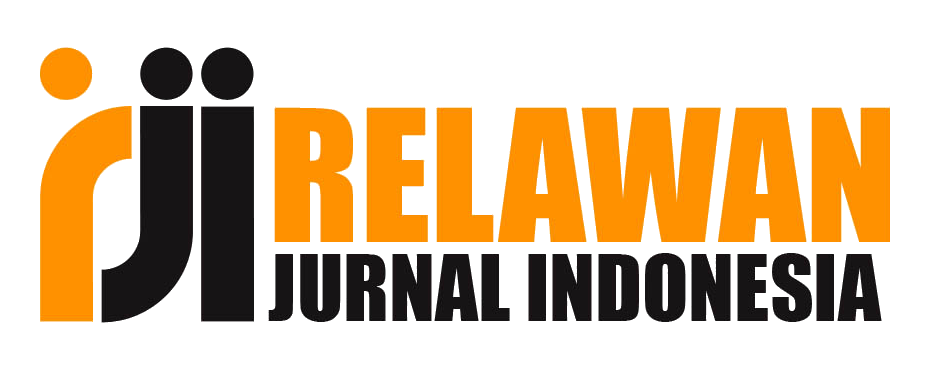IDENTIFIKASI KEPADATAN PENDUDUK DI PROVINSI JAWA BARAT MENGGUNAKAN HIERARCHICAL CLUSTERING
DOI:
https://doi.org/10.21063/jtif.2025.V13.1.28-39Keywords:
Hierarchical Clustering , Population density, Disaster mitigation , RiverAbstract
This research applies a hierarchical clustering algorithm to identify population density patterns in West Java (18 regencies, 9 cities) as a basis for natural disaster management. Population density data for 2020-2022 from the West Java Population Office was analyzed to group areas into three categories: densest, medium, and lowest. The hierarchical clustering method was used to group areas based on population density and flood potential, with the additional attribute of river presence. The clustering results were evaluated using the Davies-Bouldin index. The results showed that the algorithm was successfully applied, grouping 20 districts/cities with the lowest population density (Cluster 0), 3 districts/cities with medium density (Cluster 1), and 4 districts/cities with the densest density (Cluster 2).This research is expected to provide insight to the government and related institutions in planning disaster mitigation based on population density patterns, so as to reduce the risk of natural disasters in the future. This research takes data from the official source https://jabar.bps.go.id/indicator/12/245/1/kepadatan-penduduk-menurut-kabupaten-kota.html. The main objective of this research is to understand population density patterns that can provide an indication of the level of risk to certain natural disasters in the West Java region. This information is expected to be used as a basis for more effective and efficient disaster management strategies in the future. The implication of this research shows that by understanding the pattern of population density and river distribution through the hierarchical clustering method, the government and related institutions can formulate more targeted disaster management strategies.
References
C. Christiani, P. Tedjo, and B. Martono, “ANALISIS DAMPAK KEPADATAN PENDUDUK TERHADAP KUALITAS HIDUP MASYARAKAT PROVINSI JAWA TENGAH 1,” 2014.
S. Dan et al., “J U R N A L N U A N S A A K A D E M I K Jurnal Pembangunan Masyarakat (p)-SA 4.0 license,” vol. 7, no. 1, pp. 55–70, 2022.
T. A. Azis, A. S. Saputra, S. N. Azkiya, and C. Windiati, “Pengaruh Kepadatan Penduduk Terhadap Produk Domestik Regional Bruto (PDRB) Per Kapita Provinsi Jawa Barat Tahun 2022,” vol. 3, no. 2, pp. 119–127, 2024, doi: 10.30640/inisiatif.v3i2.2265.
S. Hardiyanto, D. Pulungan, U. Muhammadiyah, and T. Selatan, “Komunikasi Efektif Sebagai Upaya Penanggulangan Bencana Alam di Kota Padangsidimpuan,” 2019.
N. Sulaksana, P. P. R. Rendra, and M. Sulastri, “SOSIALISASI MITIGASI BENCANA LONGSOR DAN BANJIR SECARA VIRTUAL DI MASA PANDEMI COVID-19,” Kumawula: Jurnal Pengabdian Kepada Masyarakat, vol. 4, no. 3, p. 465, Dec. 2021, doi: 10.24198/kumawula.v4i3.35516.
P. Agina Widyaswara Suwaryo et al., “Faktor-Faktor Yang Mempengaruhi Tingkat Pengetahuan Masyarakat dalam Mitigasi Bencana Alam Tanah Longsor,” 2017.
S. K. Dirjen, P. Riset, D. Pengembangan, R. Dikti, R. O. Pratikto, and N. Damastuti, “Terakreditasi SINTA Peringkat 4 Klasterisasi Menggunakan Agglomerative Hierarchical Clustering Untuk Memodelkan Wilayah Banjir,” 2018.
M. Ilham Mubarok et al., “PEMETAAN ZONA RESIKO PENULARAN COVID-19 DI SULAWESI SELATAN MENGGUNAKAN PLOT DENDROGRAM HIERARCHICAL CLUSTERING (Mapping Of The Risk Zone Of Transmission Of Covid-19 In South Sulawesi Using A Hierarchical Clustering Dendrogram Plot),” 2021.
R. S. Oktari et al., “Indonesia’s Climate-Related Disasters and Health Adaptation Policy in the Build-Up to COP26 and Beyond,” Jan. 01, 2022, MDPI. doi: 10.3390/su14021006.
S. Widaningsih, “PERBANDINGAN METODE DATA MINING UNTUK PREDIKSI NILAI DAN WAKTU KELULUSAN MAHASISWA PRODI TEKNIK INFORMATIKA DENGAN ALGORITMA C4,5, NAÏVE BAYES, KNN DAN SVM,” Jurnal Tekno Insentif, vol. 13, no. 1, pp. 16–25, Apr. 2019, doi: 10.36787/jti.v13i1.78.
J. Jaya Purnama and S. Rahayu, “KLASIFIKASI KONSUMSI ENERGI INDUSTRI BAJA MENGGUNAKAN TEKNIK DATA MINING,” 2022. [Online]. Available: https://ejurnal.teknokrat.ac.id/index.php/teknoinfo/index
BPS Provinsi Jawa Barat, “https://jabar.bps.go.id/indicator/12/245/1/kepadatan-penduduk-menurut-kabupaten-kota.html”.
B. S. Purnomo and P. T. Prasetyaningrum, “PENERAPAN DATA MINING DALAM MENGELOMPOKKAN KUNJUNGAN WISATAWAN DI KOTA YOGYAKARTA MENGGUNAKAN METODE K-MEANS,” 2021.
M. Nishom and M. Y. Fathoni, “Implementasi Pendekatan Rule-Of-Thumb untuk Optimasi Algoritma K-Means Clustering,” vol. 03, no. 02, 2018.
J. Homepage, K. Pratama Simanjuntak, and U. Khaira, “MALCOM: Indonesian Journal of Machine Learning and Computer Science Hotspot Clustering in Jambi Province Using Agglomerative Hierarchical Clustering Algorithm Pengelompokkan Titik Api di Provinsi Jambi dengan Algoritma Agglomerative Hierarchical Clustering,” vol. 1, pp. 7–16, 2021.
T. Alfina, B. Santosa, and R. A. Barakbah, “Analisa Perbandingan Metode Hierarchical Clustering, K-means dan Gabungan Keduanya dalam Cluster Data (Studi kasus : Problem Kerja Praktek JurusanTeknik Industri ITS),” Sep. 2012.
Downloads
Published
Issue
Section
License
Copyright (c) 2025 Wahyu Iskandar Simanjuntak, Yusran Timur Samuel

This work is licensed under a Creative Commons Attribution-ShareAlike 4.0 International License.
This journal is licensed under a Creative Commons Attribution-ShareAlike 4.0 International License (CC BY-SA 4.0).
Authors retain copyright and grant the journal the right of first publication.
The work may be shared and adapted, even for commercial purposes, as long as appropriate credit is given and any new creations are licensed under the identical terms.
















